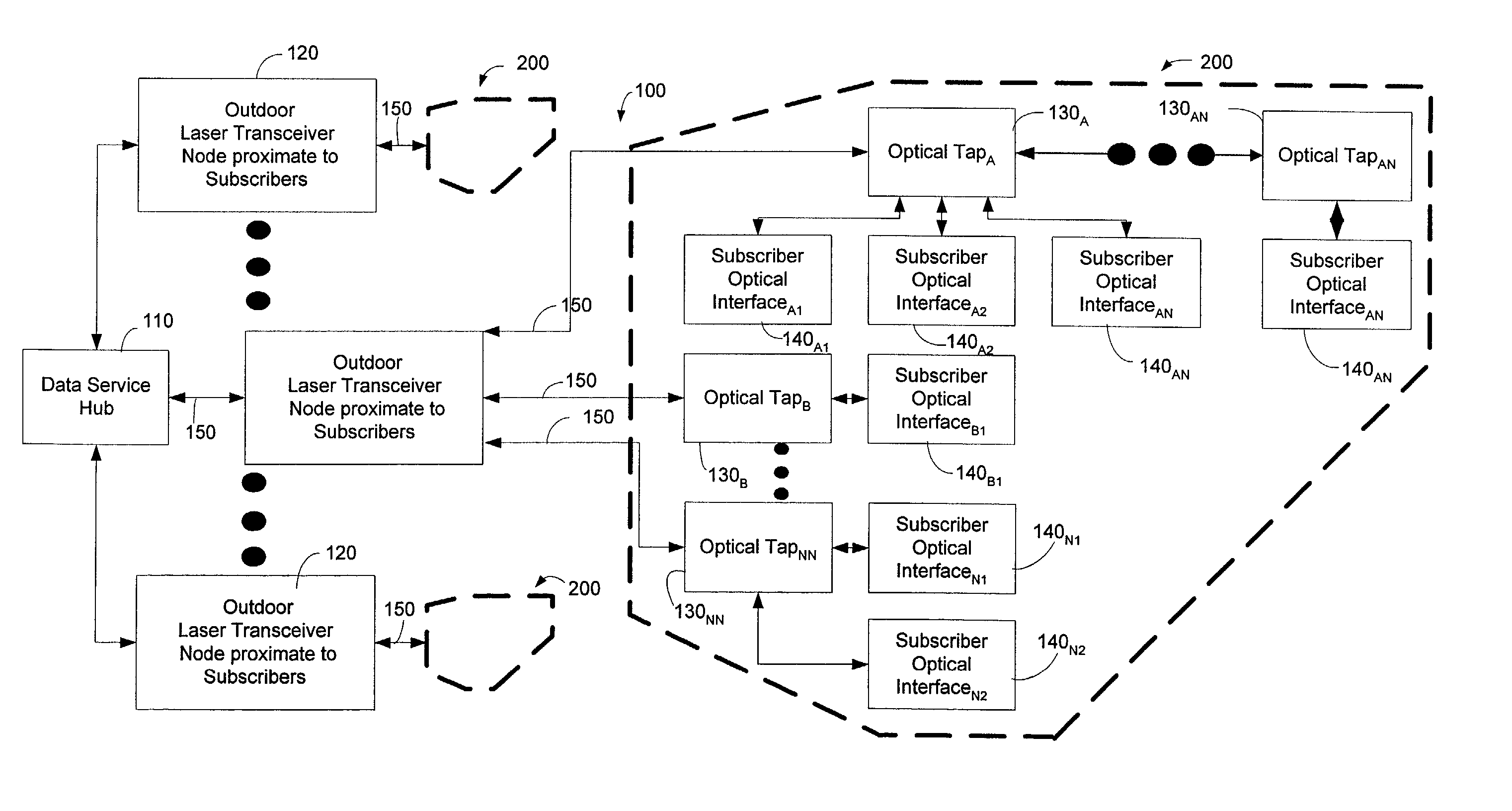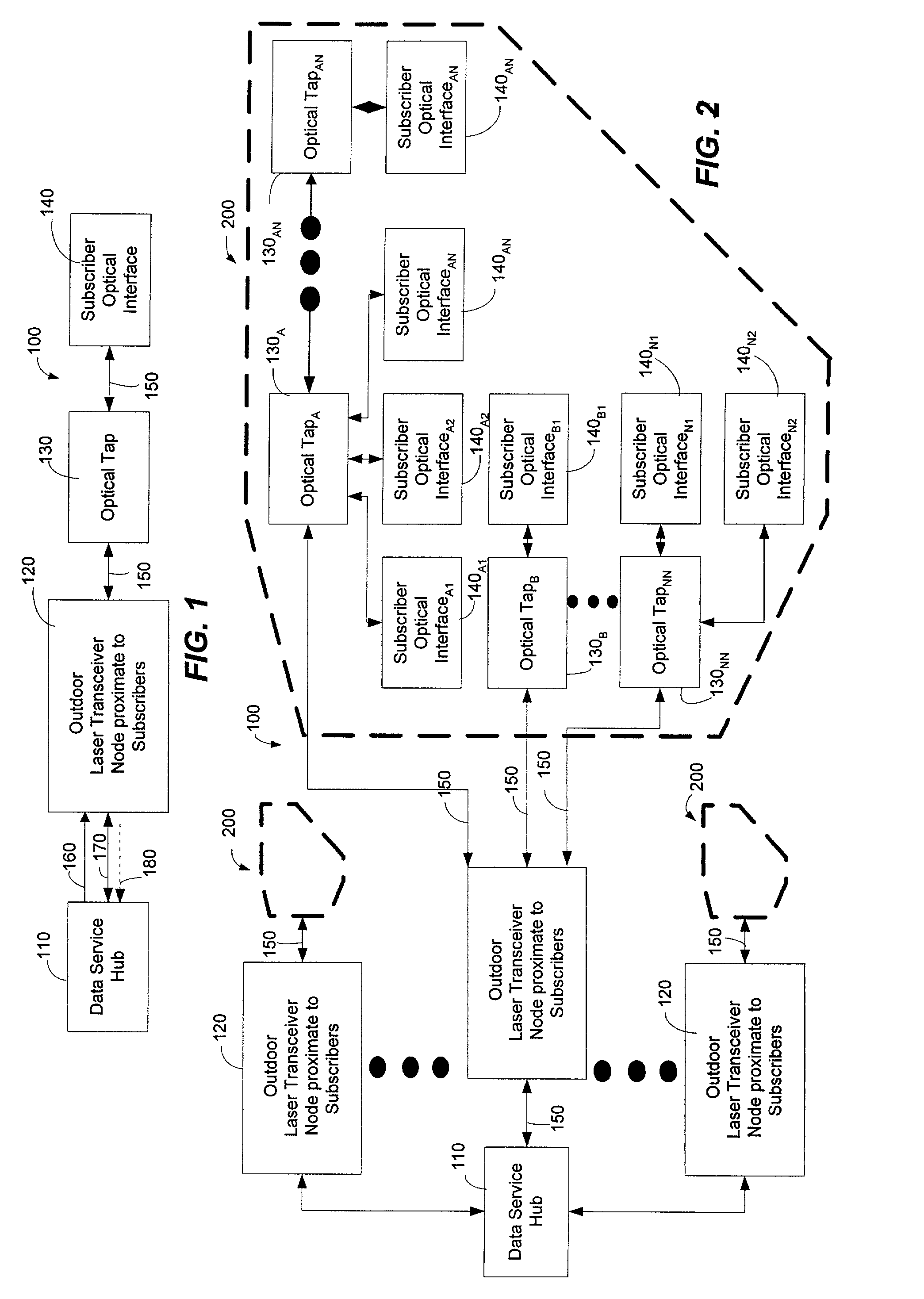Method and system for processing upstream packets of an optical network
a technology of optical network and upstream packet, applied in the field of system and method for communicating upstream optical signals, can solve the problems of increasing the overall cost of the system, prohibiting the cost of ftth and fttb architecture, and hfc architecture yielding a very fiber intensive last mile, etc., to achieve efficient allocation of bandwidth, maximize minimum, and maximize the effect of minimum
- Summary
- Abstract
- Description
- Claims
- Application Information
AI Technical Summary
Benefits of technology
Problems solved by technology
Method used
Image
Examples
Embodiment Construction
[0046]The present invention may be embodied in software or hardware or a combination thereof disposed within an optical network. The present invention can comprise a transceiver node that further comprises an optical tap routing device and a plurality of optical tap multiplexers for receiving upstream packets from one or more subscriber optical interfaces. Unlike conventional token bucket emulation that handles data packets in a single manner, the protocol of the present invention can process aggregates of data packets with token bucket emulation. With the protocol of the present invention, a transceiver node can allocate additional or reduced upstream bandwidth based upon the demand of one or more subscribers. The present invention can monitor and adjust a subscriber's upstream bandwidth on a subscription basis or on an as-needed basis. The present invention can permit each subscriber of a subscriber group to have a guaranteed bandwidth. However, most portions of guaranteed bandwid...
PUM
 Login to View More
Login to View More Abstract
Description
Claims
Application Information
 Login to View More
Login to View More - R&D
- Intellectual Property
- Life Sciences
- Materials
- Tech Scout
- Unparalleled Data Quality
- Higher Quality Content
- 60% Fewer Hallucinations
Browse by: Latest US Patents, China's latest patents, Technical Efficacy Thesaurus, Application Domain, Technology Topic, Popular Technical Reports.
© 2025 PatSnap. All rights reserved.Legal|Privacy policy|Modern Slavery Act Transparency Statement|Sitemap|About US| Contact US: help@patsnap.com



